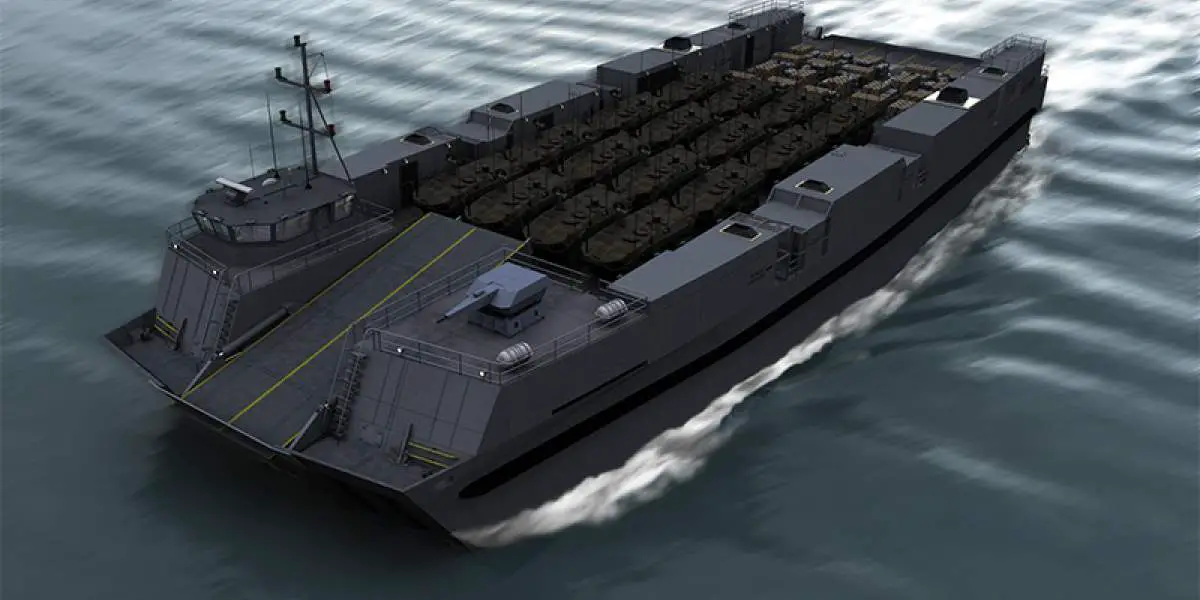The Textron Systems’ Surface Effect Cargo Amphibious Transport (SECAT) design recently received the Approval in Principle (AIP) designation for Light Warships, Patrol, and High-Speed Naval Vessels from the American Bureau of Shipping (ABS). SECAT is an evolutionary logistics connector design with unmatched cargo transportation capability. This surface effect design combines the capabilities of speeds to 50 knots, a payload of up to 600 tons with an extremely stable and shallow draft hull, survivable inside contested logistics environments. The on-cushion shallow landing draft and high speed of the SECAT make it both survivable and versatile inside contested logistics environments. The craft’s air cushion is mine resistant making SECAT much more survivable than traditional large slow mono hulls currently being used for most logistics missions. Additionally, the versatile design does not require piers or other facilities to unload cargo which is a significant capability benefit when operating in austere and remote maritime island environments.
“We like to use the moniker ’50 knots, 500 tons, at 500 nautical miles,” said Textron Systems Vice President, Sea Systems, Ryan Schaffernocker. “However, SECAT can also execute high-speed longer-range missions out to 1500 nautical miles with a slightly lower cargo payload making it the perfect intra-theater cargo transportation platform for supporting long-range island campaigns.”
During beaching operations, SECAT is much more agile than traditional monohull amphibious ships because it does not need to perform anchoring details which are slow, complicated, manpower intensive, and risky. Instead of using anchors to fix its position, the craft simply comes off cushion, settles on the bottom, extends its ramp, and offloads cargo while using its water-jet propulsion to maintain position to the shoreline. When it’s time to depart, the platform quickly returns to on-cushion mode and rapidly gets underway. In addition to significantly increasing the volume of cargo delivered to the landing zone, this efficient operation reduces risk to the craft and its operators.
Designed for a crew of 29, the SECAT design is flexible and can incorporate degrees of automation supporting reduced crew requirements. As a personnel transport, SECAT can support 75 Marines using in-theater-seating. The craft can also be configured using Personnel Transport Modules, like the Fleet’s current Landing Craft Air Cushion (LCAC) and Ship-to-Shore Connectors (SSC), to carry up to 800 Marines for short duration transportation missions. Another important feature of the design is its cargo ‘drive through’ capability. Using a dynamic positioning system and an automated cushion control system, this highly stable platform was designed to execute at-sea rolling stock cargo transfer with larger Military Sealift Command transport vessels in up to Sea State 4. Currently, there are no platforms in the U.S. Navy that can provide this type of capability. Textron Systems’ SECAT is the perfect platform for conducting long range, heavy cargo, and high-speed transportation missions inside of the most contested logistics environments.















